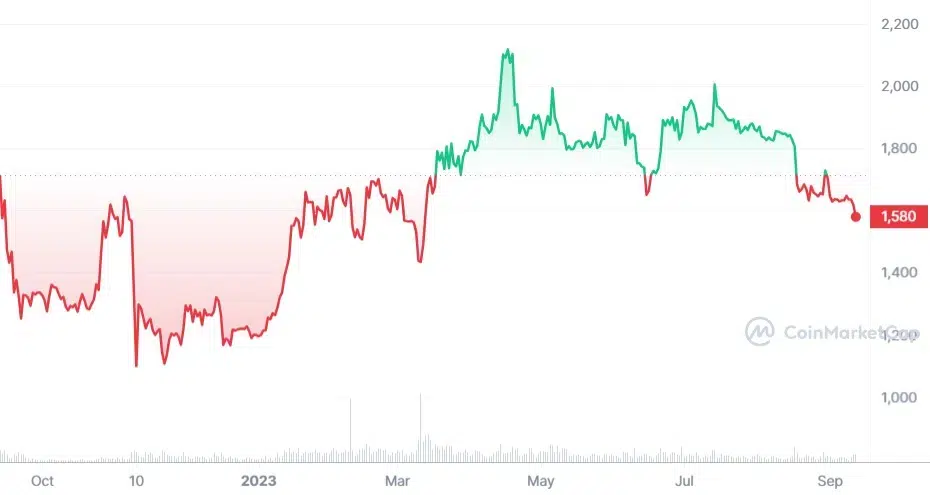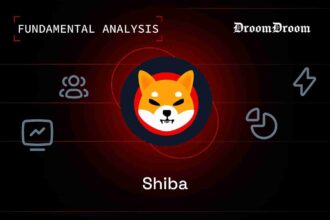The obliviousness to the real world makes blockchains unable to communicate with each other, thus ultimately preventing any form of interoperability. If you have been trying to trade BTC on the Ethereum blockchain, it may seem a little like trying to get a PC game to run on a Mac – it won’t work unless you install special software. This interoperability issue is resolved by “wrapped tokens”, representing blockchain native tokens issued on a non-native blockchain.
A wrapped token is a tokenized version of an asset which makes it possible for the asset to exist on different blockchains. It is pegged to the value of the original asset they represent.
The original asset in the form of a native token on a blockchain is placed in a wrapper like a digital vault so that the wrapped version can be minted on a different blockchain.
Understanding Wrapped Token in Detail
There is no one-size-fits-all solution for blockchains as they march towards the future, signifying the need for interoperability (the ability to work with other programs).
The right way to explain the need for wrapped tokens –
“Bitcoin can’t speak the language of Ethereum and vice versa. This means we can’t spend bitcoin on the Ethereum network, nor can we make use of Ethereum’s smart contracts on the Bitcoin network.”
Wrapped tokens or wrapped crypto are means to overcome the absence of communication between different blockchains. This exercise of minting new tokens that are compliant with another blockchain allows users to use assets cross-chains entirely.
Think about how a stablecoin gets its value for a minute. Stablecoins have a derivative value from fiat currencies, i.e. for example, Tether’s USDT is pegged to the value of the US Dollar.
When it comes to wrapped tokens, the underlying asset is a native token of a blockchain existing on another blockchain. Imagine being able to use Ethereum on Binance Smart Chain with much lower fees compared to the more expensive gas fees on Ethereum.
The interesting part is that you can redeem these wrapped crypto tokens whenever you want via a process called unwrapping.
Source: Wrapping Trust for Interoperability: A Preliminary Study of Wrapped Tokens
Two of the most common forms of wrapped tokens you might be familiar with are:
- WBTC, is a tokenized variant of Bitcoin and runs on the Ethereum blockchain network. WBTC is pegged 1:1 to the price of Bitcoin i.e. one WBTC shall always equal one BTC.
Wrapped Bitcoin Price (in USD); CoinMarketCap
- WETH, which is a wrapped version of Ether that enables seamless interoperability with ERC-20 token standards.

Wrapped Ethereum (in USD); CoinMarketCap
Some of the reasons to promote interoperability between blockchains are:
- In centralized exchanges (CEXs), almost all the trading pairs are with bitcoin while in decentralized exchanges (DEXs), the trading pairs are with ETH, SOL, and so on. Since the highest portion of liquidity is still retained by bitcoin, it creates a lack of liquidity for DEXs w.r.t. CEXs.
- Bitcoin blockchain is characterized by low scalability and high transaction fees during congestion time which makes it not suitable for the constant large volume of transactions.
- Crypto tokens belonging to different ecosystems (e.g., Solana, Ethereum, Tron) are not managed by the same smart contract. Even in the same ecosystem, these native tokens may belong to different standards (e.g., ERC-20, ERC-223, TRC-10, TRC-20, BEP2), creating further interoperability issues.
Check out this DroomDroom article encompassing a comprehensive guide to BRC-20 Tokens.
How Do Wrapped Tokens Work?

Source: Slance
How do we exactly “wrap” crypto tokens?
For wrapped tokens to work, there has to be a custodian to hold an equivalent amount of the cryptocurrency you want to wrap. The custodian can be a smart contract, a multi-currency wallet, a decentralized autonomous organization (DAO) or a merchant. Allow me to make it simple to decipher.
Let’s take WBTC as our example. Before you can mint one WBTC on the Ethereum blockchain, the custodian must have received one BTC to place on hold. Who are the “custodians”? These are the organizations responsible for securing the BTC reserves on the Bitcoin network. In the case of WBTC, it is currently minted by a single custodian, BitGo.
Who are “merchants”? Entities to which wrapped tokens are minted to and burnt from. When it comes to WBTC, this part is currently played by Kyber Network and Republic Protocol. These merchants hold a key to initiate the minting of new wrapped tokens and the burning of wrapped tokens.
Remember that the wrapped token is pegged to the value of the asset which is why the custodian holds the equivalent asset to mint the wrapped token. The wrapping process is as follows:
- Send a certain amount of BTC to the custodian who, in turn, stores the BTC in a digital vault
- Once the underlying asset is locked away, the custodian mints an equivalent amount of WBTC in the Ethereum blockchain – this is what’s called a “wrapping” process
- Finally, you get your wrapped BTC (or WBTC) where BTC is wrapped in a digital vault using a smart contract
A similar process, but in reverse, is followed to request to burn WBTC on the Ethereum blockchain and release an equal number of BTC on the Bitcoin network. This exercise of burning wrapped tokens is generally known as “unwrapping” the underlying asset.
Benefits of Wrapped Tokens
Imagine an interoperability problem in a real-world environment where people would not be able to exchange dollars for euros or yens for rubles. Wouldn’t that make for a terrible financial ecosystem, where people would fail to experience anything beyond the limits of their own currency? Aligning this to our current discussion, the same would be the case with users of different blockchains without these wrapped coins.
So consider the situation wherein most trading by volume happens on centralised exchanges – like Coinbase, Binance or Kraken – and is based on fiat, stablecoin or Bitcoin pairs. If you being a Bitcoin holder want to trade a much broader range of currency pairs, you can simply wrap your Bitcoin and then trade wBTC on a decentralised exchange across an impressively larger range of pairs.
You can dive deeper with DroomDroom’s compilation of some of the best DeFi Projects in 2023.
Thus, here are some benefits of wrapped crypto tokens in the DeFi space:
- Enhanced Accessibility:
Wrapped tokens can increase the accessibility of certain assets and create new investment opportunities that may not have been possible to trade in a decentralized manner before.
- Increased Liquidity:
Wrapped crypto coins may increase the liquidity of certain assets by allowing them to be easily bought and sold on digital asset exchanges, making it easier for traders to buy and sell assets – ultimately creating the benefit of increased market activity.
- More speed, Less expensive:
One of the use cases of wrapped tokens is asset tokenization. Usually, Ethereum has a shorter block time – these blocks are created every ~15 seconds and this inherently allows for transaction confirmation in less than 5 minutes, this is faster compared to many other assets including Bitcoin, gold and fiat currencies.
Block confirmation represents another block of transactions added to the blockchain. Gain a complete understanding of this concept through this article:
Recommended read: Block Confirmation: A Comprehensive Introduction to Blockchain Design
Limitations of Wrapped Tokens
Some limitations you need to consider include the need for a custodian as the means to get the wrapping and unwrapping to work. You can’t get any wrapped token for cross-chain transactions without going through a custodian. It is, therefore, required that the custodian is trustworthy for the implementation of any wrapped token.
Another demerit of the wrapped coins is the expensive gas fees hence making the minting process quite costly with the addition of slippage. While there are possible financial benefits to wrapped tokens (it allows you to use them on a blockchain with lower transaction fees) one of its critical disadvantages may be that the minting process itself may trigger fees.
Also, ideally, the wrapped token must maintain the same value as the original crypto asset it represents, it is possible that in times of high volatility the value of a wrapped token could potentially be lower than the original asset.
Conclusion
Wrapped tokens have the potential to make it possible to use cryptocurrencies from one blockchain on a different blockchain, thus, significantly impacting the way we think about interoperability. The advent of DeFi brought with itself the need for bridging the gap between Bitcoin and Ethereum as investors could simply exchange tokens on the market. We can expect to witness more projects adopting this innovative approach to interoperability as the demand for wrapped crypto tokens grows.



















